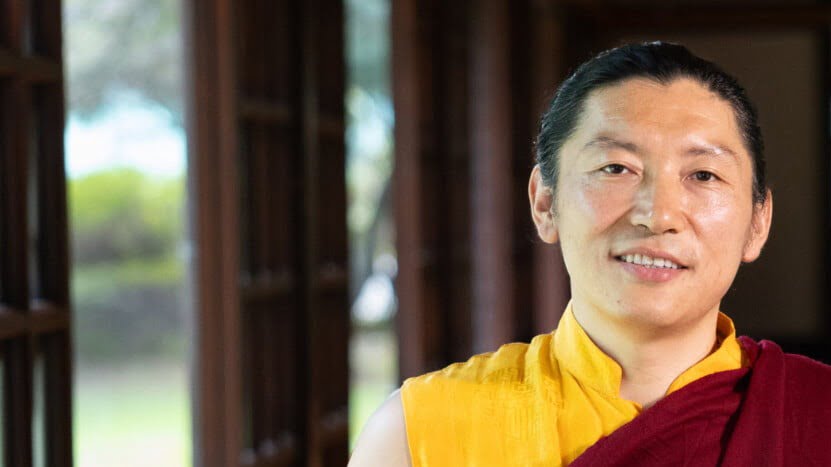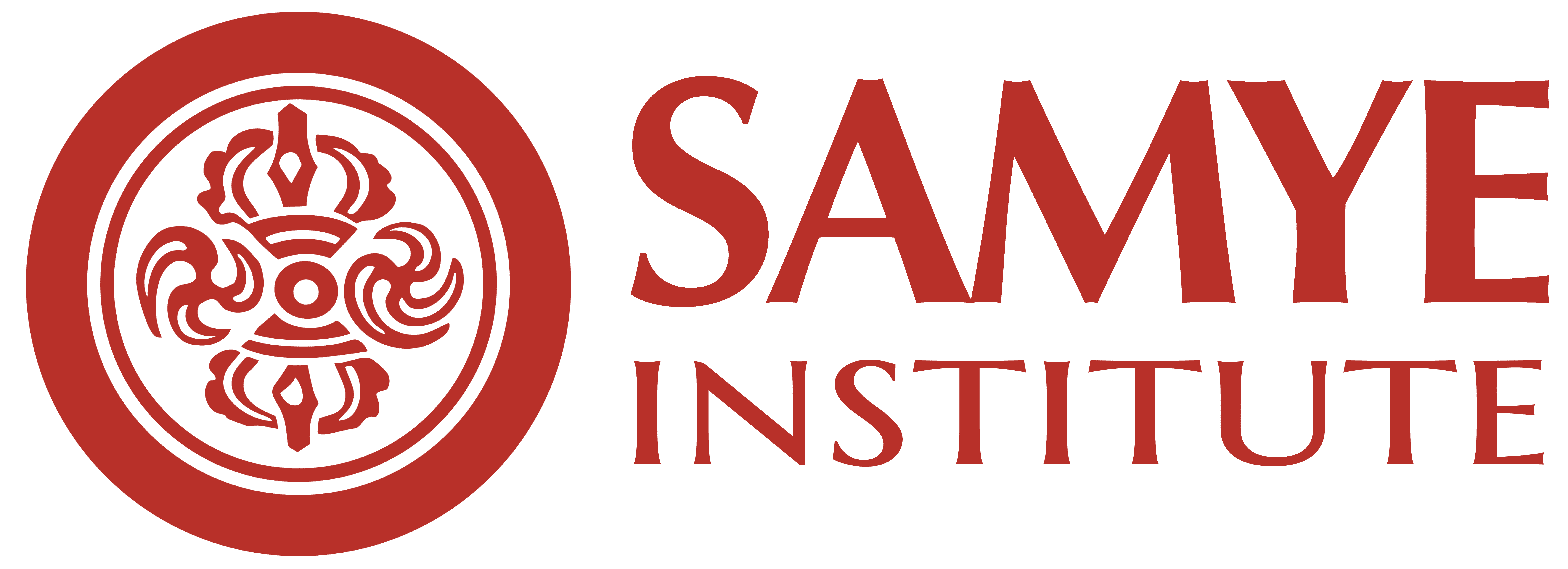Overview
The Path of Realization leads students through the traditional Vajrayana journey as laid out by the Mahaguru Padmasambhava. One enters this pathway after having taken refuge and receiving empowerment. In this path, a student focuses on the third line of the Buddha’s teaching, “tame your own mind”. Simultaneously, one trains in the two aspects of bodhicitta: relative and ultimate. By accumulating the preliminary practices (ngöndro) and engaging in sadhana practices, one trains in devotion and pure perception, the supreme Vajrayana methods for revealing our true nature and awakening to complete and perfect enlightenment.

Introducing the Path of Realization
In this video, Phakchok Rinpoche introduces the third of the three student pathways: The Path of Realization.
Three Pillars
Phakchok Rinpoche bases his Vajrayana teachings on Guru Padmasambhava’s profound text The Gradual Path of the Wisdom Essence (Lamrim Yeshe Nyingpo). Within this presentation, the three main pillars of practice are emphasized as compassion (lamrim), pure perception (yeshe), and recognition of mind nature (nyingpo).
Lamrim
Students expand the lojong (mind training) teachings they have practiced on the Path of Transformation. Contemplation of gross and subtle impermanence is crucial. Based on love and compassion training, one gives rise to bodhicitta, the mindset upon complete awakening.
Yeshé
Developing the wisdom (yeshé) required for realization, the student enters the Vajrayana path by receiving empowerment. Students begin with the Four Foundations (ngöndro) and the practice of Mahayoga. Students train in the four nails that hold the life force of the deity and the six yogas.
Nyingpo
Nyingpo refers to the path of the Great Perfection (Dzokchen) which means the practices of trekchö (cutting through to primordial purity) and tögal (spontaneous presence). This is the culmination of all pathways. One trains in recognizing rigpa, primordially pure awareness.
First Pillar: Lamrim
The gradual mind training continues with the contemplation of impermanence and the four thoughts that turn the mind toward the Dharma. One gives rise to the mind of awakening, or bodhicitta. One makes the sincere prayer, “May all sentient beings be free from suffering and the causes of suffering. May they all attain the enlightenment of realization.”
Preparation
Ultimate Bodhicitta
The essence of bodhicitta is knowing that the nature of the mind of every living being is actually buddha.
Second Pillar: Yeshé
Yeshé is the Tibetan translation of the Sanskrit word jñāna, meaning understanding. The wisdom of a buddha is undefiled knowledge, free of all conceptual elaborations. This is the basic state of primordial emptiness, or the dharmakaya. In terms of the Vajrayana path, this is cultivated through the practice of the development and completion stages.
The Four Empowerments
Understanding the Four Empowerments
The Four Empowerments are essential practices for purifying a practitioner’s body, speech, mind, and habitual tendencies. Each empowerment corresponds to a different aspect of the practitioner’s being, purifying and transforming it into the vajra body.
Understanding the Four Obscurations
Understanding and working through the four obscurations is crucial for any spiritual practitioner aiming for enlightenment. Identifying and acknowledging these obscurations within ourselves is necessary to transcend them.
The Four Foundations
Guru Yoga
Among the four foundations, Guru Yoga is the most important. Guru Yoga consists of seeing the Guru as a buddha; perceiving all the Guru’s activities as awakened activity; knowing the Guru to be the embodiment of all buddhas, superior in kindness even to the Buddha; knowing their nature to be the three kayas, indivisible from the nature of our mind; and seeing all that arises within appearance and existence as the Guru.
Mahayoga
Concise Daily Practice
The Concise Daily Sadhana is the most concise version of the Guru Practice from the Guru’s Heart Practice, Dispeller of All Obstacles (Lamé Tukdrup Barché Künsel). This is a joint revelation by Jamyang Khyentsé Wangpo and Chokgyur Dechen Lingpa. Mahaguru Padmasambhava composed this simple practice for practitioners to invoke the guru. This practice allows us to embody his immeasurable love, wisdom, and compassionate activity.
Trinlé Nyingpo
This Yoga of Essential Activity is a terma from the Guru’s Heart Practice, Dispeller of All Obstacles (Lamé Tukdrub Barché Künsel Accomplishing the Guru’s Wisdom Mind, Dispeller of All Obstacles). In this sadhana, the chief figure is Guru Rinpoche, with the sambhogakaya Avalokiteshvara and the dharmakaya Amitabha, surrounded by his twelve emanations.
Anuyoga
Nadi, Prana, Bindu
The subtle body is comprised of prana (subtle winds), nadis (channels), and bindu (consciousness). In these practices, these are recognized as the components of the vajra body. The wisdom channel is the guru. The wisdom movement is the wind, the lung (Tibetan) or prana of the yidam deity. Students selected for these teachings will complete 100 hours of practice related to each aspect of the subtle body. Instruction will only be offered in retreat settings and students must be approved for these retreats by Phakchok Rinpoche.
Six Yogas
Students are guided through the first two yogas, the practices of Bardo and Phowa. These teachings are given publicly. These practices prepare students for the dying process and the transferrence of consciousness at the time of death. The additional four yogas are illusory body, luminosity, dream yoga, and heat yoga. These are restricted and Phakchok Rinpoche will determine eligibility. Instruction will only be offered in retreat settings.
Third Pillar: Nyingpo
Nyingpo is the Tibetan for the Sanskrit word garbha. It means essence or womb, the supreme source from which everything manifests. It is inexhaustible and unchanging. This pillar focuses on the unexcelled practices of Atiyoga, the highest of the nine vehicles within the Nyingma school. The practice of Atiyoga or Dzokchen is known as the Great Perfection. It is the recognition and subsequent stability of the spontaneously present primordial rigpa, or awareness.
Atiyoga
Trekchö Preliminaries
Trekchö Main Part
Students will go through the four stages of Dzokchen practice. Phakchok Rinpoche will personally direct the practice and students must meet with him directly. The stages of practice include pointing out the nature of mind (ngotrö), gaining certainty (takchö), gaining stability (ding top), and complete mastery (tsal chen dzok).
Interested in the Path of Realization?
We are working on a new membership area to allow you to easily access all the materials for your study and practice. There will be a monthly fee with scholarships available to all who need them.
Register your interest below and we’ll let you know when it’s ready.

